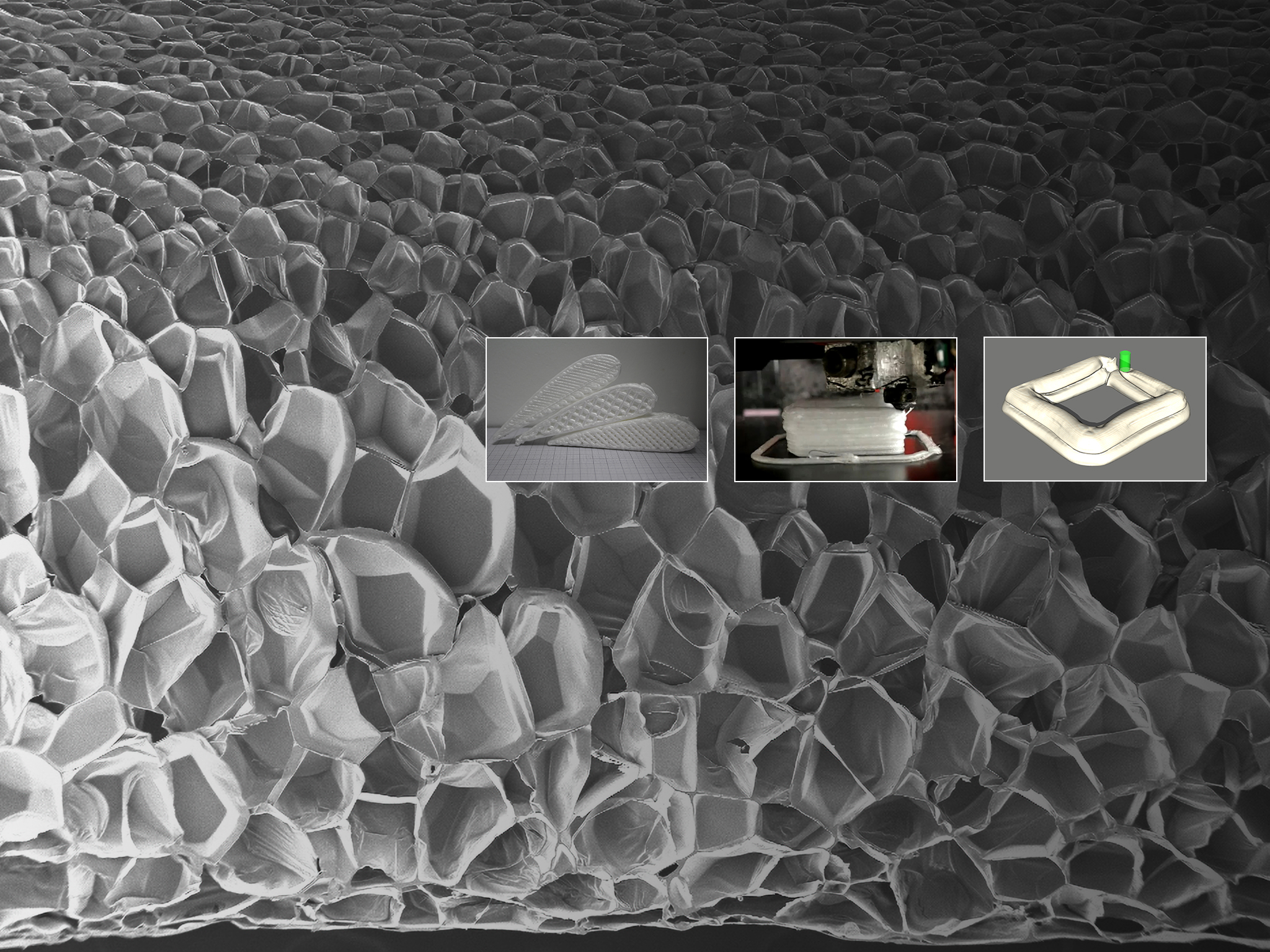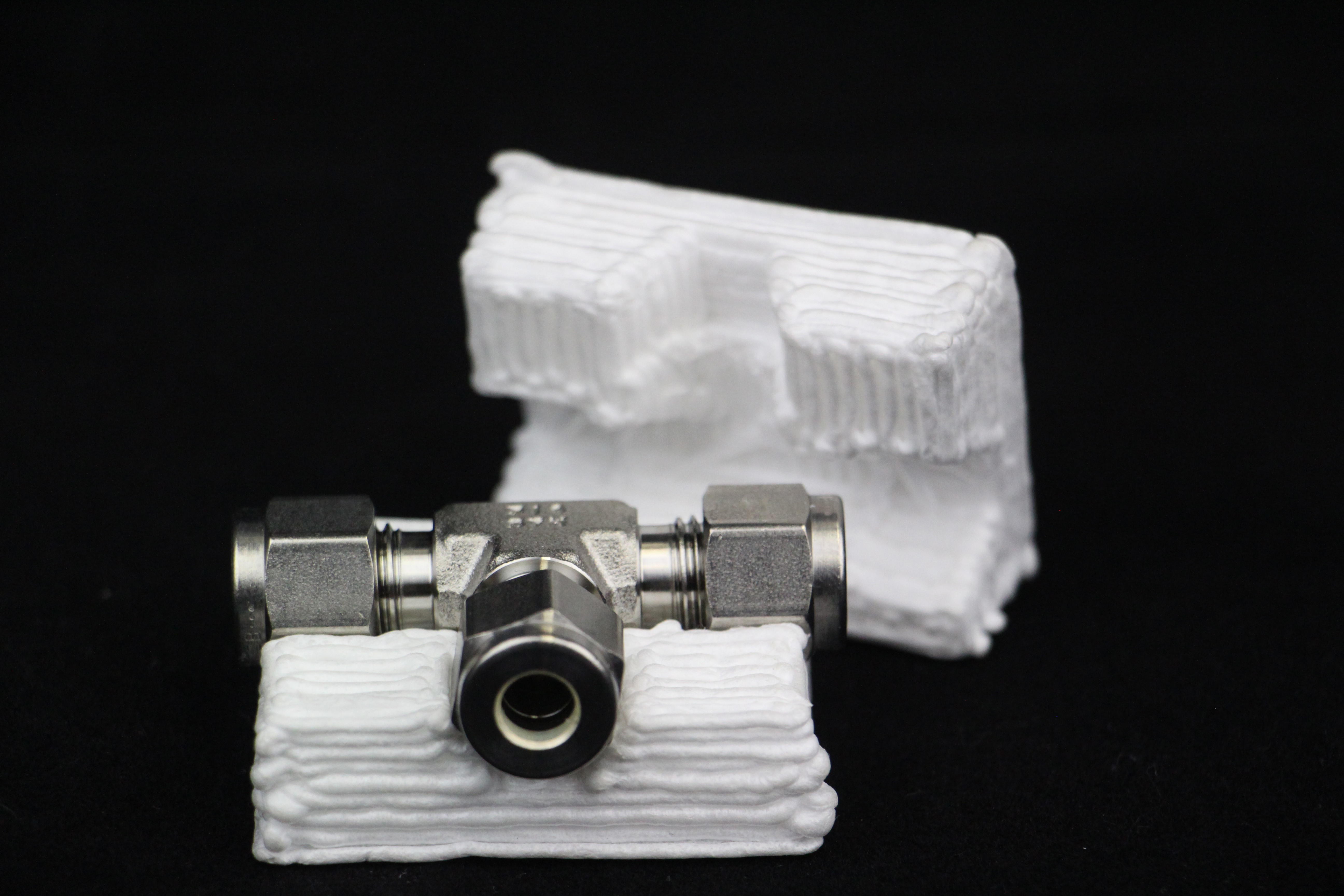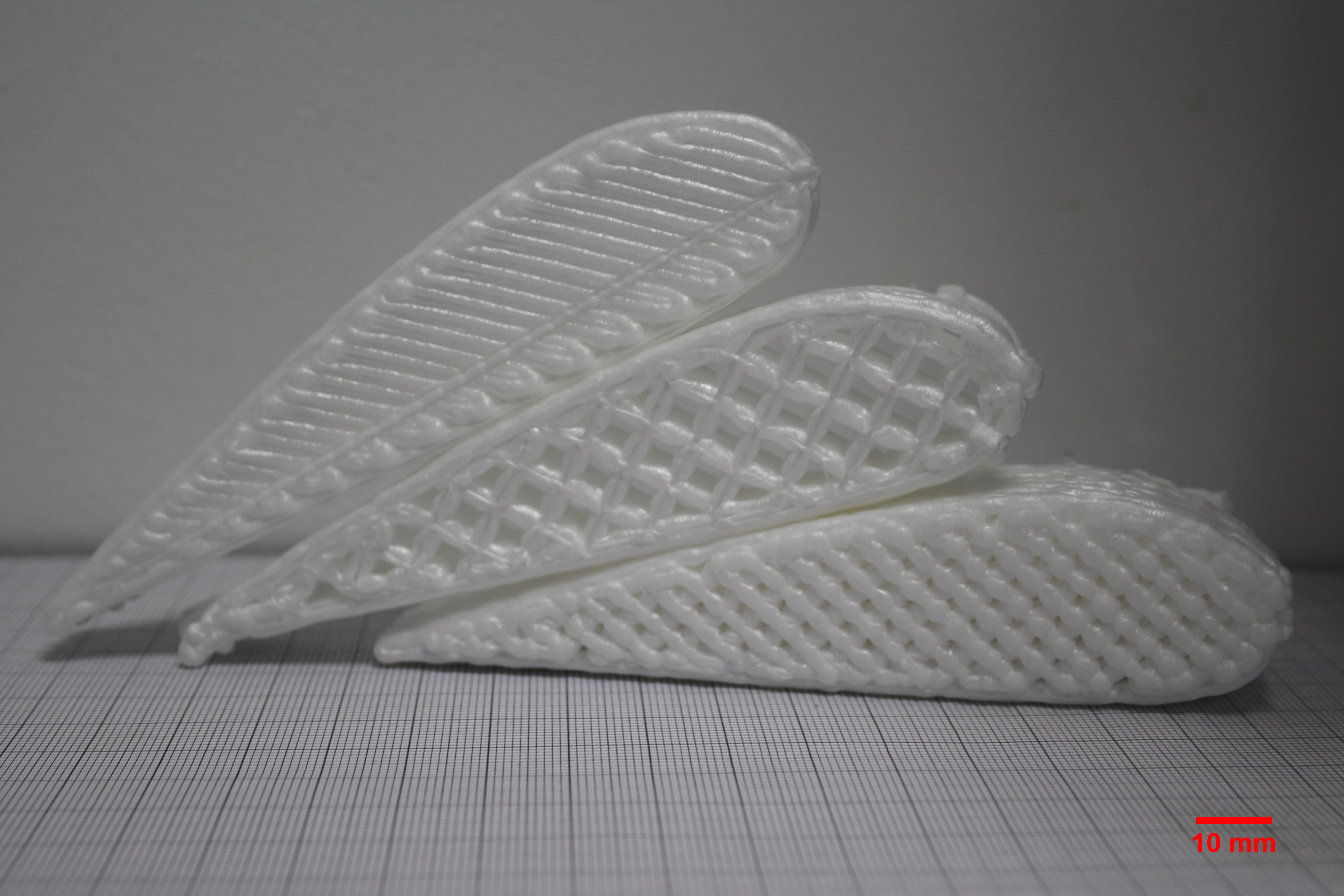3D printing is often the most economical solution for applications involving small batch sizes and customized components. Foam printing processes are being developed to achieve the weight savings required in lightweight construction. Custom-made lightweight components from the 3D printer can be used to create a variety of sustainable and highly individualized products such as insulating coverings, seat cushions, prostheses or shoe soles. End-to-end digitalization and simulation of the foam printing process accelerates process and product development and ensures high product quality at an early stage.
FoAM – Additive Manufacturing With Foam 3D Printing
Foam Components by Additive Manufacturing: Innovative Filaments, Printing Technology and Simulation
Innovative Material Approach for Even Lighter Components
The current state of the art is to load the printing filaments with chemical blowing agents, which can reduce the density of the components to 35 percent of the solid material. The Fraunhofer Institute for Chemical Technology ICT has developed a new process for adding blowing agents to the filaments and tested it on various materials to cover a wide range of applications (polylactic acid PLA, cellulose propionate CP and polystyrene PS). With the new approach, the component density can even be reduced to up to five percent compared to solid material. This also means that the volume-related printing times can be reduced by a factor of 20 compared to the solid variant.
Guaranteed Component Properties Thanks to Improved Process Control
The density distribution of the foam in the printed component can be easily adjusted over a wide range of values via the printing parameters (temperature, feed rate, etc.). This means that combined designs can also be produced in a single printing process, e.g. so-called sandwich constructions with thin cover layers of solid material on the outside of the component and a foamed core in the middle. This allows parts with high mechanical strength and low weight to be produced.
In order to be able to print foamable or low-viscosity plastics at all, the Center for Additive Production (ZAP)[only available in German] at the Fraunhofer Institute for Production Engineering and Automation IPA developed a special printing nozzle that prevents liquid material from escaping unintentionally during runs without material discharge. This is an essential prerequisite for producing high-quality components that do not require manual reworking.

Privacy warning
With the click on the play button an external video from www.youtube.com is loaded and started. Your data is possible transferred and stored to third party. Do not start the video if you disagree. Find more about the youtube privacy statement under the following link: https://policies.google.com/privacyComparison of the real printing process with the FOAM simulation
Simulation-Based Planning of the Printing Process
As the printing result is influenced by many parameters, determining the optimum process control through trial and error can be very time-consuming and material-intensive.
This is where specialized simulation models and methods from the department »Flow and Material Simulation« at the Fraunhofer Institute for Industrial Mathematics ITWM come in. Our FOAM software it possible to map the foam printing process in the simulation so that the expected result can be compared with the specification for the component without having to print a sample. The process parameters (propellant loading, feed rate, nozzle trajectory, etc.) are successively adjusted until the desired result is achieved. This not only increases sustainability when using the component, but also conserves valuable resources during production.
The simulation provides both the shape and the density distribution of the printed component so that structural-mechanical simulations can also be carried out later on. This provides the application with a digital process chain that begins with the CAD design and, beyond process control, provides data for further analysis and evaluation of the printed component.


